If you are a proud pond owner, you will need to regularly care for your pond. One form of pond care is the removal of reeds, as reeds can become like weeds that overgrow around the pond.
How do you remove reeds? Read this article to learn tips for removing reeds from your pond.
Table of Contents
5 Tips for Removing Reeds
Note that you may need to remove reeds from the pond once or twice per year.
If you want to remove the plants once per year, do so in late fall and early spring. You should also remove them in summer if you want to remove them twice per year.
Here are some helpful tips to remove reeds from your pond:
1. Physical Control
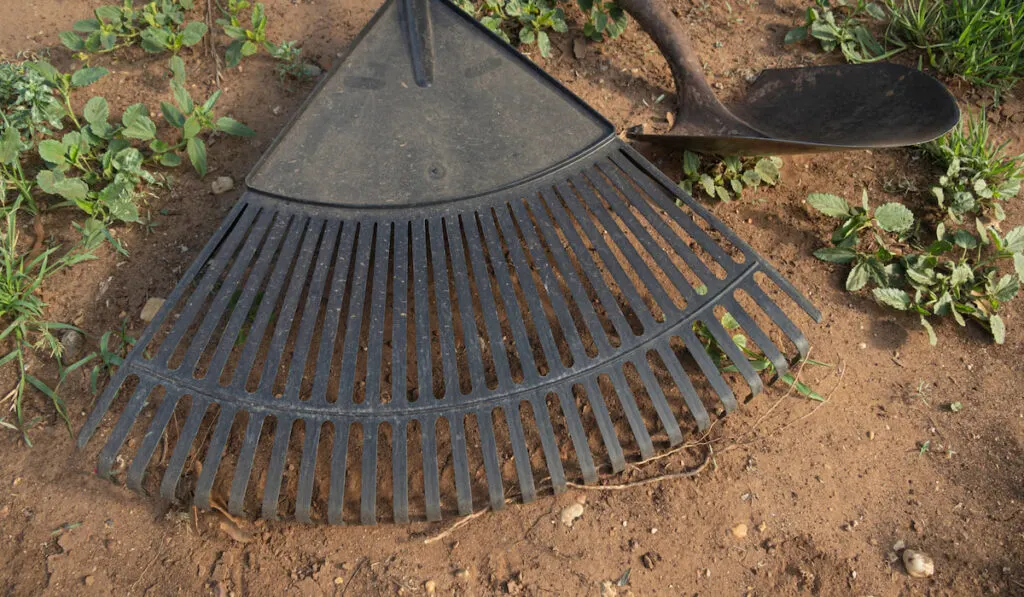
If you want to physically remove the reeds, you may need some tools.
The best way to make this method work is to remove the reeds as soon as you see them so that they do not grow uncontrollably. You will need to mow the area frequently to prevent growth.
Some of the tools that you will need are:
- Shovel or spade
- Weed rake
- Manual weed tiller
- Weed cutter
You can make use of the spade or shovels to dig out the rhizome of the reeds, as these grasses produce underground stems. Remember that you will need to clear the area regularly.
2. Chemical Control (Herbicides)

You can kill reeds with pesticide products.
Here are the active ingredients in some pesticides that can kill your reeds for you:
- Glyphosate (rated excellent): This product is effective for reeds that are around and not in the water. Some brands that use this chemical are Rodeo, Eraser AQ, Aquamaster, AquaNeat, Touchdown PRO, Refuge, and RoundUp.
- Imazamox (rated good): This chemical kills reeds by inhibiting some of their growing enzymes. Some brands that make use of it are Clearcast and Beyond Herbicide.
- Imazapyr (rated excellent): This is a highly effective chemical in inhibiting the acetohydroxyacid synthase enzyme and killing reeds. Some brands with this ingredient in their products are Habitat, Polaris, and Arsenal.
It is up to you to decide which product you will use. Please do not pour these products into a pond with fish.
3. Biological Control
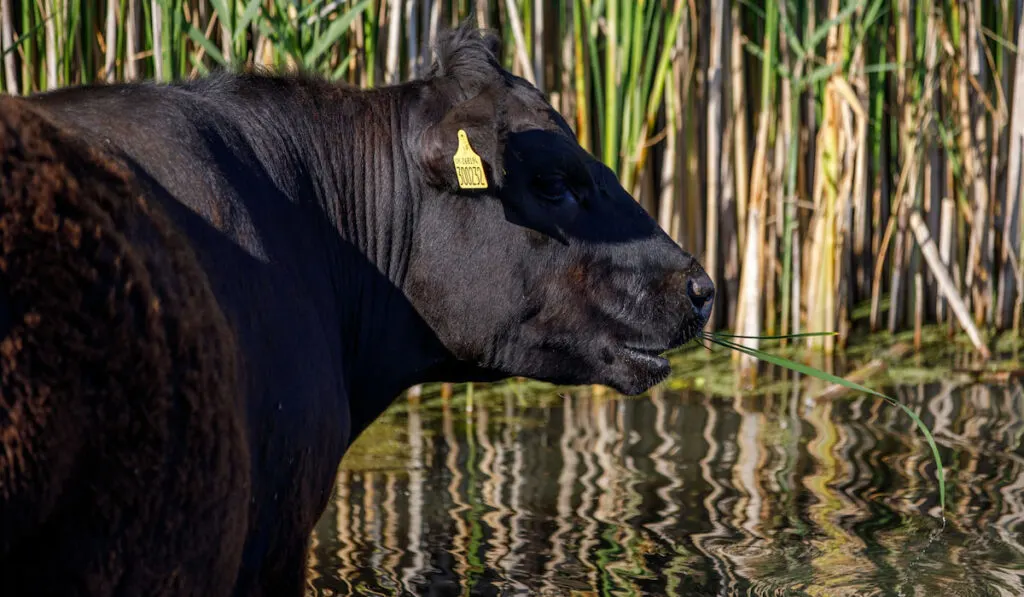
Biological control involves the use of animals to control the growth of reeds.
There are very few fish species that can win the fight against reeds because some reeds grow far away from the pond. However, you can employ cows, sheep, and goats to reduce the reeds because these animals are herbivores.
Unless the water near the reeds is shallow, restrict your farm animals so that they do not pass the reeds and go into the water. You should be attentive or even use a fence to prevent the animals from entering the deeper parts of the pond.
4. Remove Their Rhizomes
No matter the method of control that you use, you want to make sure that you remove the reed rhizomes. No matter how hard you try to remove the reeds, more will grow as long as their rhizomes are still in the water.
The rhizome or underground stem is the hardy part of a plant, so you need to dig it out.
The best time to remove rhizomes is when the pond is dry.
Also, take note of the bare land. As soon as you see new reeds growing, dig them out; do not cut them. Digging them out can reveal the location of their rhizome and help you to remove them.
5. Cover the Ground with a Black or Clear Tarp
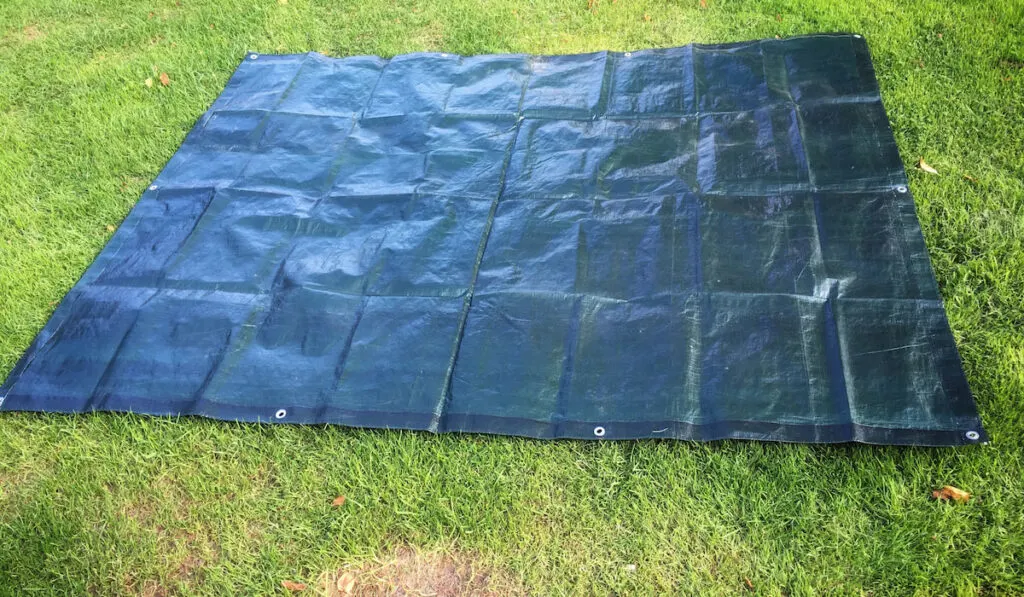
One unique way to prevent the reeds from growing is to use a black tarp. This tarp prevents sunlight from reaching the reeds, so they will stop growing because they no longer have enough light for photosynthesis.
If you will be using the black tarp, use it after you clear the reeds so that a new set will not grow.
Another type of tarp that you can use is a clear or transparent one. This method is best done in the summer months.
You want to cover the reeds with a clear tap and use some rocks to seal the edges so that the tarp is as airtight as you can make it. The heat of the sun will kill the reeds in less than a month.
Now you can remove the reeds if you want.
However, what are the benefits of reeds, and should you keep them? Continue reading.
What Are Reeds, and Are Reeds Good for Ponds?
The common reed is a type of grass that grows around or in ponds. This plant has an underground stem or rhizome, so it can be difficult to remove.
However, reeds can be beneficial to you and your pond according to the way you look at them. Here are the benefits of reeds to ponds:
1. Reeds Help Purify Pond Water
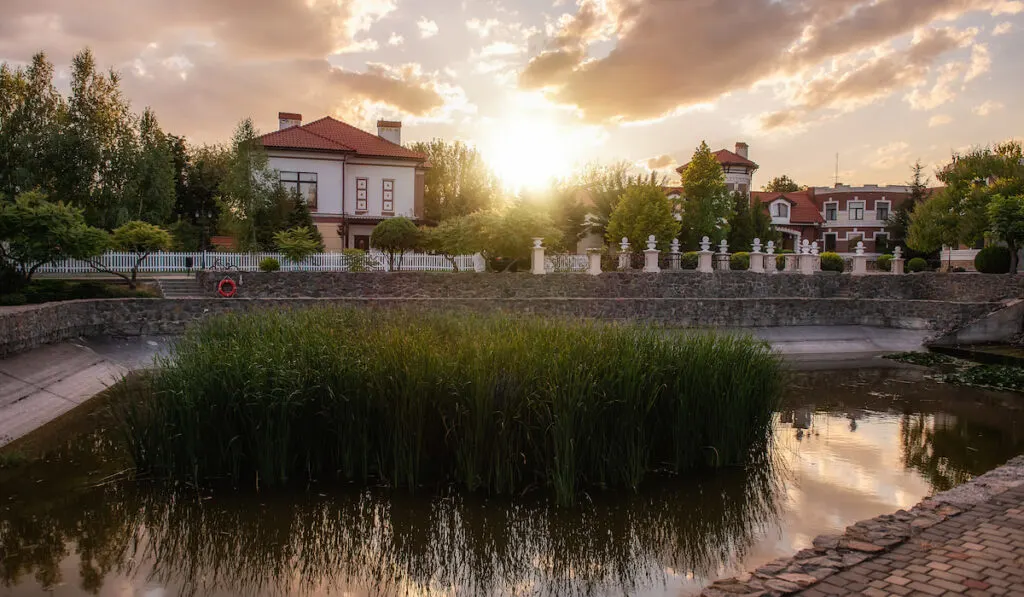
A productive pond with fish has a lot of nutrients. The pond water will continue to improve in nutrients as you continue to feed the fish and the fish continue to excrete waste.
If care is not taken, the pond can become too nutritious or eutrophic, and this can lead to algae growing in it.
While there are so many ways to purify pond water, one easy and massive way is to plant reeds and other aquatic plants in or around the pond.
The plants collect the excess nutrients, so the water will not become eutrophic but will still be productive.
2. Reeds Serve as Barrier Plants

Barrier plants are helpful, especially if you have children and pets. These plants will prevent your children and pets from entering the pond because they can block access to the pond.
Reeds will also keep your fish in the pond. This means that reeds are particularly good for ponds with catfish in them, as catfish love escaping the pond and entering the land.
However, the truth is that using reeds are barrier plants will require a lot of work because if you leave them unattended, they can grow out of control. It is, therefore, best to use a fence.
However, reeds are a great option if you need natural solutions.
3. They Attract Insects for Your Fish and Farm Animals

Like other types of plants, reeds produce flowers. These flowers attract pollinating insects to the pond.
This means that the presence of reeds around your pond can give your fish an extra source of food, as fish love to eat insects.
Aside from fish, your farm birds such as ducks will benefit from the reeds as they love eating insects too.
Aside from providing fish food, you can benefit from the sight of these insects as they are incredibly beautiful. Reeds even attract hummingbirds and other birds to the pond. You surely want this diversity in your yard.
4. They Can Serve as Food for Herbivorous Fishes and Animals

Some fish such as tilapia are either herbivorous or omnivorous, according to the species. This means that while you are feeding them with their pellets, they can get a lot of extra nutrition by eating plants such as reeds.
Wouldn’t you like to get a free source of food for your herbivorous fish?
Please note that reeds are not the best type of food for fish because they can be difficult to control. Instead, you could make use of some types of algae.
Aside from fish, your farm animals, such as cows and goats, will eat the excess reeds, so the plants are beneficial.
5. They Can Be Beautiful When Well-Maintained
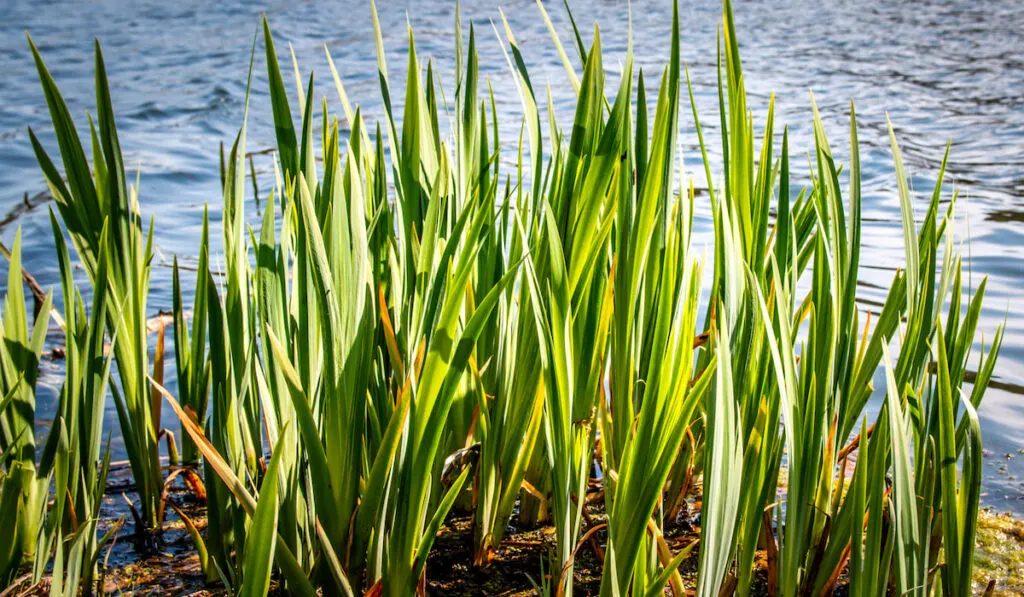
Reeds grow mostly around the pond and not in the water. If they were growing in the water like other aquatic plants, they could be a source of headache for you.
However, they mostly grow outside (but very close to) the pond. This means that you can make use of them.
Even if you do not want to use the reeds as barrier plants, you can control their size and height so that they will be a beautiful addition to the landscape. Well, it is all up to you.
6. They Indicate a Productive Pond
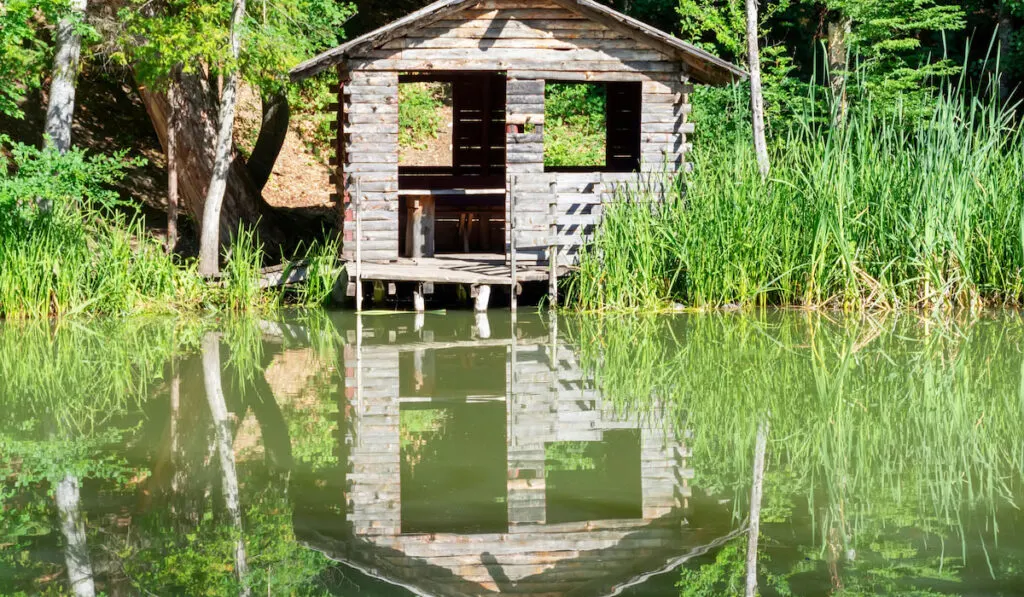
You might be worried when you see too many reeds and other plants in your pond.
However, do you know that you should be more worried if you do not see any plants in the pond?
The absence of heavy vegetation such as reeds and other aquatic plants in or around the pond simply means that the pond is not productive or not suitable for growing fish.
Did you use a chemical pesticide recently?
If not, there should be no reason why the reeds are not growing except that the water does not have nutrients. This simply means that before you can start growing reeds in such water, you will need to fertilize the pond.
7. Great Addition to the Compost Pile
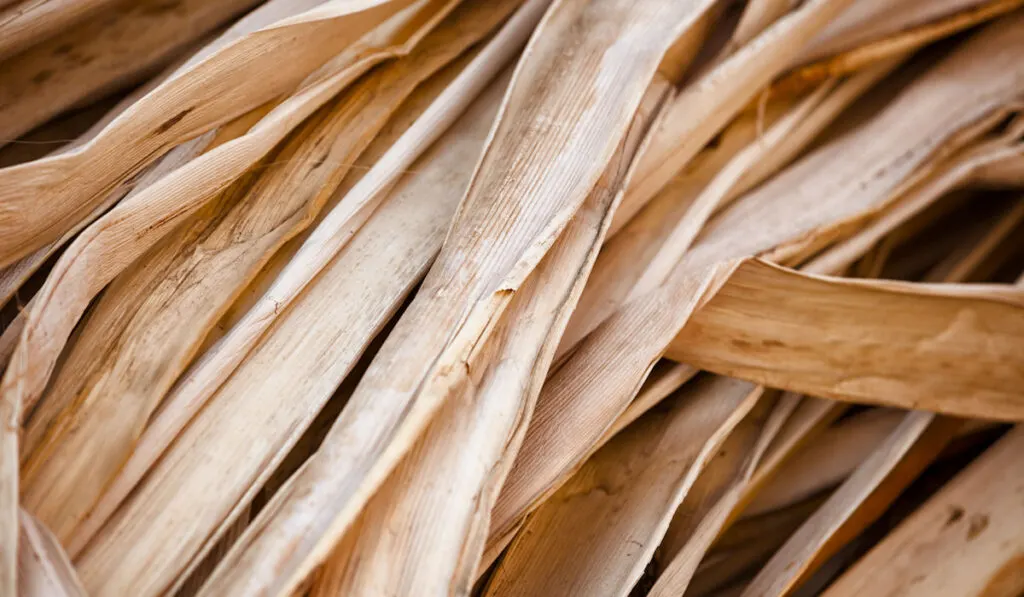
Just in case you need extra sources of nitrogen (i.e., fresh greens) for your compost pile, you do not need to search any further, as reeds make an unlimited supply of greens for the compost pile.
You can use reeds to enrich your compost pile so that you do not need to spend so much on nitrogen-rich fertilizers anymore.
Just remember that a compost pile is not complete without sources of carbon (i.e., dry browns). You can surely dry the reeds and make use of them as a source of carbon for your compost too.
As you can see, reeds are super beneficial, even to gardeners. Now it is up to you to decide if you will keep the reeds or not.
Conclusion
Reeds can make your pond look very ugly if you do not remove or maintain them. If you want to remove them, you can use physical, biological, and even chemical methods to remove them. However, make sure that you want to remove them before you do.
